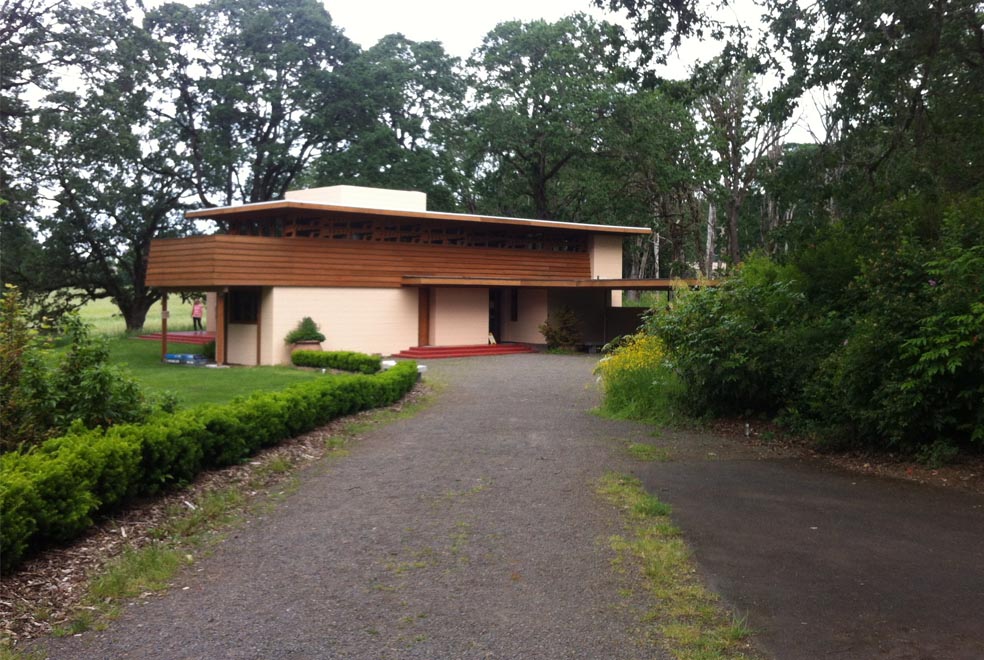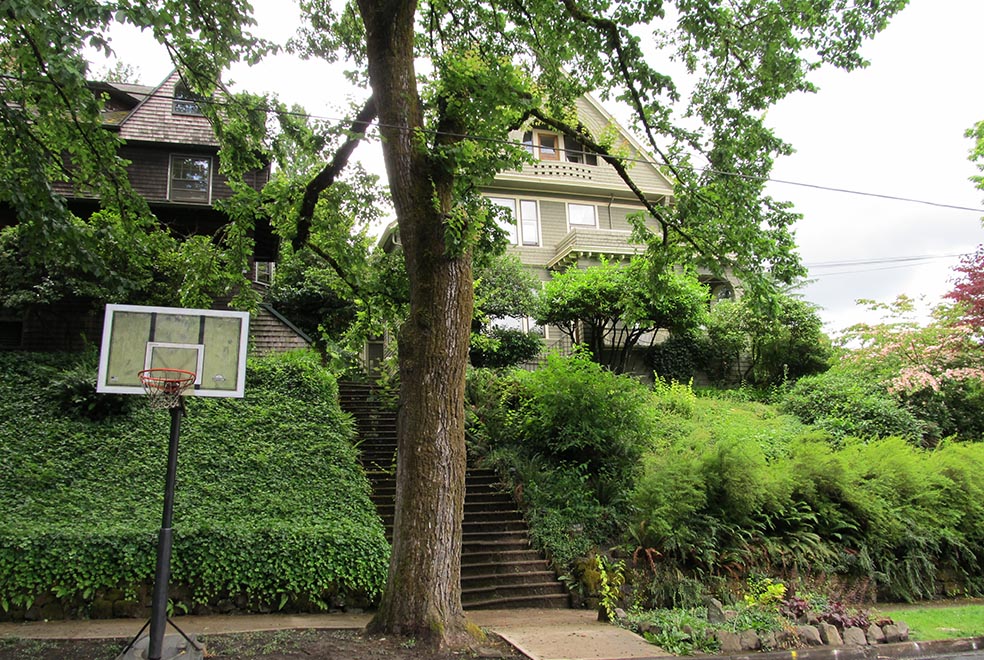Tweet Apparently. The biking community in Portland is overwhelmingly white and seems to be comprised of the ultra fit who routinely go on 300-mile bike camping trips or insist on biking long and hilly distances in town, scoffing at those who choose easier, multi-modal ways of getting around. Don’t get me wrong, this level of fitness and dedication is laudable, certainly. But it’s also very intimidating and unusual. The biking community in Portland, at least the biking community I have been exposed to, tends to skew heavily (or should I say muscularly?) toward fit and environmentally conscious white people. Granted,…
Tweet The Gordon House, located in Silverton, Oregon, is the only Frank Lloyd Wright designed house in Oregon and the only Wright building in the Pacific Northwest open to the public. It was built in 1964 for Evelyn and Conrad Gordon in Wilsonville, OR and was saved from demolition in 2001 when it was disassembled and moved to Silverton, Oregon. Set in a serene environment next to the Oregon Garden, this Wright gem is a beautiful and unique home to look at inside and out. Guided tours of the house are available everyday except Tuesdays and start at noon, 1pm…
Tweet I grew up as an architect loving modernism and its clean lines, its spartan rectilinear shapes and its honesty of materials. But now that I’ve gotten some distance from my modernism-centric education, I see how modernism can go wrong, especially on a residential scale in established neighborhoods. As I’ve written emphatically before, I don’t think the solution is to copy historic homes, but to create a new contemporary architecture that reflects the materials, sensibilities and values of today while still honoring timeless and universal principles of being neighborhood and people oriented. Historic homes celebrated the front porch, for example,…
Tweet I just spent more than two weeks now in the suburb of Chandler, Arizona. As far as suburbs go, it’s not bad. It’s actually considered an “inner ring” suburb, at a whopping 25 miles from downtown Phoenix, which is a testament to how sprawling Phoenix metro really is. Every time I spend time in the suburbs, I am reminded of why I live in the city. Suburbia is like Wonder Bread – bland, easily digestible, convenient, but really it offers little in terms of nutrition for the soul. Here are 10 reasons why: 1. Everything looks the same. Perhaps…
Tweet Real estate booms and busts, exorbitant property values, displacement, gentrification and slumification are all predicated on the concept of private property. The European concept of land as property has become the rule in the world as we know it today and everything revolves around it, including entire economies and ways of life. In this post, I dissect the idea of property ownership and look at what place means underneath the filter of property ownership. Though we won’t be doing away with private property ownership any time soon, we need to look at ways to take back power for the…
Tweet On this Independence Day, let’s take a look at the early days of Portland, how it got settled and how it consolidated three small cities into one large one to compete with arch nemesis Seattle. In 1880, Portland was still a small railroad town with only 17,000 residents on the west side of the Willamette and a few hundred more scattered on the east side. It was more of a country town than a bustling city. The population was a mix of Europeans and Chinese. But by the turn of the 20th century, Portland made a place for itself…
Tweet I noticed that what I like to do when I visit Phoenix are not the same things I liked to do when I lived here. I appreciate a whole different set of attractions as a visitor that I completely took for granted when I lived here. Now that I live in the Pacific Northwest, I can see and appreciate the things that make Phoenix uniquely Phoenix – the things that draw from its Latino and Native American culture, the scorching Mars-like climate and landscape, and the history of the place. When I lived in Phoenix, I was most interested…
Tweet Today’s post is by contributing writer Walt Lockley: Earlier this week Blooming Rock covered the recent controversy here Portland as Kevin Rose, a well-known wealthy sort of person from out of town (you can’t see me but I’m silently indicating another state south of here), purchased a nice old house here. A house in Northwest Portland built in 1892. The Montague House. Kevin Rose bought it on February 28th and then recently announced that he wanted to tear it down. No, actually, he announced that he was going to tear it down. Thus Rose kicked the hornet’s nest. Taz…
Tweet Director Park, located between Yamhill and Taylor on Park, is one of the Park Blocks, a series of consecutive parks in downtown Portland that originated in 1848. The Park Blocks ended up being divided into the South Park Blocks and the North Park Blocks. Director Park is a way to connect the two sets. Believe it or not, Director Park narrowly escaped the fate of becoming a 12-story parking garage in 1995. Thankfully, more visionary leaders, like then mayor Neil Goldschmidt and developer Tom Moyer, interceded and the block became a public park instead. And what a good thing…
Tweet Emotions have been running high regarding the purchase and now possible demolition of an 1892 historic home in the Willamette Heights neighborhood in Northwest Portland. Neighbors and concerned Portlanders are enraged that someone could buy this historically significant house merely to demolish it and build something new on the site. Kevin Rose, a Google executive and millionaire, and his wife bought the house on February 28th for $1.3 million. The house was one of the first in the neighborhood, built in 1892 by the Montague family, which was prominent in early 20th century legal circles. The house clearly has historic…
























